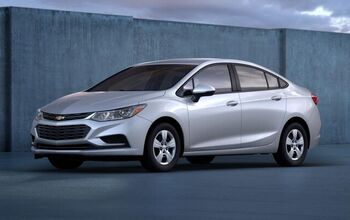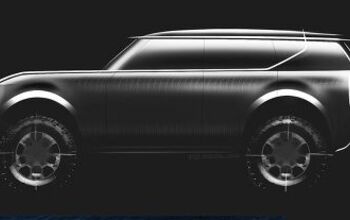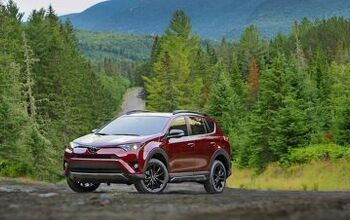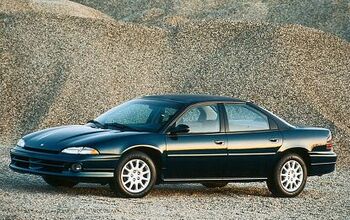QOTD: A CEO to Call Your Own?

Never meet your heroes, the saying goes, which suggests that maybe these relative strangers we put on a pedestal to gaze at in awe and admiration are actually shallow, flawed creatures in real life. Who knows how disappointed I’d have been had I met my childhood hero. Frankly, I’m not even sure who that would be.
Tom Selleck, perhaps.
In the automotive realm, there’s no shortage of choice in company leaders who, for whatever reason, stand out as someone to be admired. Present day or past, these leaders’ innovation, bold decision making, and personal flair (or perhaps notoriety) stir something inside us.
Who’s the automotive top dog you can’t help but feel inspired by?
Step up to the buffet. Alan Mulally of Ford still sees plenty of mentions in our TTAC Slack conversations, and for good reason. The man knew how to guide a ship through heavy seas.
Perhaps Mary Barra is your preferred role model. As the first female CEO of a major automaker, Barra cracked the glass ceiling, ensuring a steady flow of GM crossovers that continues to gush forth to this day. Then again, maybe one of the many Toyodas is the leader you want in your wheelhouse. After all, how can we even broach this subject without mentioning the decision to green-light the XV10 Camry?
Too recent? How about George Romney’s decision to pursue a low-cost compact strategy at American Motors at the height of Detroit excess? Too bland? Maybe John Z. DeLorean’s life is the one for you.
I’ll never stop being enthralled by Lee Iacocca’s handling of Chrysler during its triage days at the turn of the 1980s, as well as the heady, platform-stretching period that followed. The man gave us the minivan and approximately fifty trillion models based on a single, carefully proportioned compact car. Not to mention the Viper, cab-forward sedans, and a Grand Cherokee for Americans aspire to. And how about those ads? It’s hard to dislike a good pitchman.
So, as we endure headlines about CEOs (well, one in particular) behaving badly, which figure from today or yesterday do you hold up above all others?

More by Steph Willems
Latest Car Reviews
Read moreLatest Product Reviews
Read moreRecent Comments
- Detlump I almost bought a dark red one of these when I was cross-shopping Volvo wagons. I didn't like the frameless glass of the doors but it was a close call. I wanted a wagon for my hockey gear and also carrying parts as I was an engineer at the time. SUVs weren't a thing at that point and I wanted an enclosed, secure cargo area.I ended up going with a 95 850 wagon and it has served me well. The only time it left me stranded (temporarily) was when the coil wire popped off. I also got a flat tire, but I can't blame the Volvo for that. BTW, I still have the 950 with 263,000 miles - just changed the timing belt too - I have that process down to about an hour by now!
- Wjtinfwb 18 year old Euro with admitted "issues". RUN from this money pit. My experience with European cars is time is more of an enemy than Mileage. I'd rather a 5 year old BMW with 120k miles than a 15 year old one with 50k. Electronics, wiring, plastics, exterior trim etc. just crumble with time, particularly if the car has lived in a harsh climate outside. I have folders of receipts from BMW, VW and Audi shops if you'd like to see the evidence of my thesis.
- Wjtinfwb We too have a Subaru, a '16 Crosstrek. Aside from it's appetite for batteries (or crappy Subaru batteries), so far it's been a reliable ride, but from day one I've always thought it felt flimsy. I'm sure we'll get good service out of it and have no plans to replace it, but won't be surprised if it starts nickel and diming up as all those plastics and the electronics start to age.
- Bd2 Excellent article, very nice car. Thank you Murilee.
- Make_light I like Subarus, and I often think they don't get enough credit for how they drive. Lots of people say it's the faux-rugged image that accounts for their popularity, but they also drive with a solidity and plantedness that's absent from a lot of the Japanese competition. That being said, this thing is ugly. I never felt that Subarus were as ugly as commenters claim they are. Boring, sure, but not necessarily ugly. But between this and the refreshed Legacy, it's like they're trying to make their vehicles look as incohesive and awkward as possible.


































Comments
Join the conversation
Another suggestion: Charles Nash. Started as an unwanted child (his parents divorced when he was six and neither wanted him, the court bound him over to a farmer basically as an indentured farmhand), started in the carriage industry stuffing cushions at Durant-Dort, where his hard work and intelligence led him to management. He transitioned with Durant to General Motors as an executive, and was president of the company from about 1911-16. When it became evident that Durant was on his way back to power, Nash didn't want to stay there. His reputation for good management got him enough financial backing to buy the Thos. B. Jeffery company from the owning family (one of Thos. B's sons had survived the Lusitania torpedoing in 1915 and was no longer interested in the business). He grew that company greatly and made not only great profits but excellent products throughout the 1920s and early 1930s. Nash was the only automaker besides GM to not lose money in 1932, the darkest year of the Depression, and the big straight-eight senior Nashes of that era were easily the equal of any car short of the rarified atmosphere of Duesenberg and the upper-range Cadillacs and Packards. Nash also made what was probably one of the best succession planning choices you can find in the industry by picking George Mason as his successor, going to the extent of merging Nash with Kelvinator (where Mason was president) to secure Mason's services because Nash recognized what an excellent executive Mason was. Charles Nash retired from active management in the late '30s, leaving Nash in probably the strongest financial and product position of any independent except maybe Packard.
Iacocca, without a doubt. Mustang to minivans, he really did some neat things (but over-extending the K car (1990+) without enough technological advancement (MPI, DOHC 16V, etc. never came, too much brougham) and handing the reigns of Ma Mopar over to Eaton instead of Lutz are not among them).